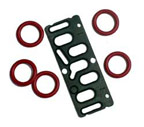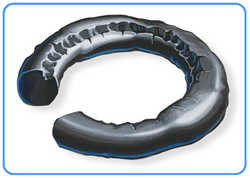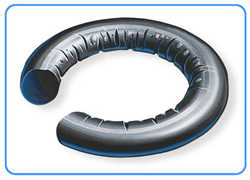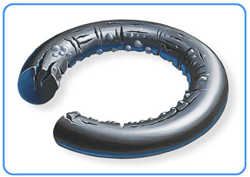
|
7108
S. Alton Way, Unit I |
(303) 758-2728
Home > O-ring, Seal Failure Analysis > Part 2
O-ring and Seal Failure Part 2
Chemical Degradation, Thermal Degradation and Explosive Decompression
|
Chemical Degradation Description: The o-ring or seal may exhibit many signs of degradation including blisters, cracks, voids or discoloration. In some cases, the degradation is observable only by measurement of physical properties. Contributing Factors: Incompatibility with the chemical and/or thermal environment. Suggested Solutions: Selection of more chemically resistant elastomer. |
|
|
Thermal Degradation Description: The o-ring or seal may exhibit radial cracks located on the highest temperature surfaces. In addition, certain elastomers may exhibit signs of softening-a shiny surface as a result of excessive temperatures. Contributing Factors: Elastomer thermal properties. Excessive temperature excursions or cycling. Suggested Solutions: Selection of an elastomer with improved thermal stability. Evaluation of the possibility of cooling sealing surfaces. |
|
|
Explosive Decompression Description: The o-ring or seal exhibits blisters, pits or pocks on its surface. Absorption of gas at high pressure and the subsequent rapid decrease in pressure. The absorbed gas blisters and ruptures the elastomer surface as the pressure is rapidly removed. Contributing Factors: Rapid pressure changes. Low-modulus/ hardness elastomer. Suggested Solutions: Higher-modulus/hardness elastomer. Slower decompression (release of pressure). |
|
Next Topic Plasma Degradation, Contamination and Abrasion
We are located in the Denver Technological
Center in a suburb of Denver, Colorado
©1997-2017, Problem Solving Products, Inc.
Website Map | Privacy Statement
| Terms of Use




